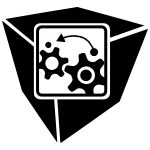53 papers:
 DAC-2015-LiuWLCWBQ #challenge #design #security
DAC-2015-LiuWLCWBQ #challenge #design #security- Cloning your mind: security challenges in cognitive system designs and their solutions (BL, CW, HL, YC, QW, MB, QQ), p. 5.
 ICALP-v1-2015-FaonioNV
ICALP-v1-2015-FaonioNV- Mind Your Coins: Fully Leakage-Resilient Signatures with Graceful Degradation (AF, JBN, DV), pp. 456–468.
 CSCW-2015-GiesbrechtCS #mobile
CSCW-2015-GiesbrechtCS #mobile- Back in Sight, Back in Mind: Picture-Centric Support for Mobile Counseling Sessions (TG, TC, GS), pp. 486–495.
 DHM-HM-2015-KlugeKZ #energy #risk management
DHM-HM-2015-KlugeKZ #energy #risk management- Inside the User’s Mind — Perception of Risks and Benefits of Unknown Technologies, Exemplified by Geothermal Energy (JK, SK, MZ), pp. 324–334.
 ICML-2015-FercoqGS
ICML-2015-FercoqGS- Mind the duality gap: safer rules for the Lasso (OF, AG, JS), pp. 333–342.
 ICLP-2015-RoseckyPB #energy #grid #prolog #simulation
ICLP-2015-RoseckyPB #energy #grid #prolog #simulation- Grid Mind: Prolog-Based Simulation Environment for Future Energy Grids (JR, FP, BB).
 CHI-2014-NorvalAH #network #recommendation #social #what
CHI-2014-NorvalAH #network #recommendation #social #what- What’s on your mind?: investigating recommendations for inclusive social networking and older adults (CN, JLA, VLH), pp. 3923–3932.
 CSCW-2014-QuattroneMC #behaviour
CSCW-2014-QuattroneMC #behaviour- Mind the map: the impact of culture and economic affluence on crowd-mapping behaviours (GQ, AJM, LC), pp. 934–944.
 DUXU-DP-2014-KramerN #design
DUXU-DP-2014-KramerN #design- Designing with the User in Mind a Cognitive Category Based Design Methodology (JK, SN), pp. 152–163.
 HCI-TMT-2014-Wahl #visual notation
HCI-TMT-2014-Wahl #visual notation- Augmentation and the Visual Mind (HW), pp. 145–156.
 HIMI-AS-2014-HirokawaFSY #learning #mindmap
HIMI-AS-2014-HirokawaFSY #learning #mindmap- Learning Winespeak from Mind Map of Wine Blogs (SH, BF, TS, CY), pp. 383–393.
 KMIS-2014-DoyleM #integration #named
KMIS-2014-DoyleM #integration #named- Mind-of-the-Product — At the Heart of GRC Knowledge Integration (ED, DM), pp. 306–312.
 ICSE-2014-RempelMKC #consistency #guidelines #traceability
ICSE-2014-RempelMKC #consistency #guidelines #traceability- Mind the gap: assessing the conformance of software traceability to relevant guidelines (PR, PM, TK, JCH), pp. 943–954.
 HT-2013-WangQS #analysis #realtime #social #twitter
HT-2013-WangQS #analysis #realtime #social #twitter- Reading tweeting minds: real-time analysis of short text for computational social science (ZW, DQ, DÓS), pp. 169–173.
 SIGMOD-2013-MiliarakiBGZ #mining #scalability #sequence
SIGMOD-2013-MiliarakiBGZ #mining #scalability #sequence- Mind the gap: large-scale frequent sequence mining (IM, KB, RG, SZ), pp. 797–808.
 MSR-2013-DullemondGSD #distributed #microblog #problem
MSR-2013-DullemondGSD #distributed #microblog #problem- Fixing the “out of sight out of mind” problem: one year of mood-based microblogging in a distributed software team (KD, BvG, MADS, AvD), pp. 267–276.
 CHI-2013-HeklerKFB #behaviour #human-computer #research #using
CHI-2013-HeklerKFB #behaviour #human-computer #research #using- Mind the theoretical gap: interpreting, using, and developing behavioral theory in HCI research (EBH, PVK, JF, MPB), pp. 3307–3316.
 CHI-2013-ThiemeWJMLWOM #design #women
CHI-2013-ThiemeWJMLWOM #design #women- Design to promote mindfulness practice and sense of self for vulnerable women in secure hospital services (AT, JW, PJ, JCM, SEL, PCW, PO, TDM), pp. 2647–2656.
 ICML-c2-2013-SalazarBGHC
ICML-c2-2013-SalazarBGHC- Exploring the Mind: Integrating Questionnaires and fMRI (ES, RB, AG, AH, LC), pp. 262–270.
 CHI-2012-FasteL #mindmap
CHI-2012-FasteL #mindmap- The untapped promise of digital mind maps (HF, HL), pp. 1017–1026.
 CAiSE-2012-PuenteD #mindmap #refactoring #wiki
CAiSE-2012-PuenteD #mindmap #refactoring #wiki- Wiki Refactoring as Mind Map Reshaping (GP, OD), pp. 646–661.
 ICEIS-v3-2012-PereiraBB #design
ICEIS-v3-2012-PereiraBB #design- Keeping Values in Mind — Artifacts for a Value-oriented and Culturally Informed Design (RP, SBB, MCCB), pp. 25–34.
 DocEng-2011-BeelL #analysis #mindmap
DocEng-2011-BeelL #analysis #mindmap- An exploratory analysis of mind maps (JB, SL), pp. 81–84.
 SIGIR-2011-Yom-TovD #physics #social
SIGIR-2011-Yom-TovD #physics #social- Out of sight, not out of mind: on the effect of social and physical detachment on information need (EYT, FD), pp. 385–394.
 Onward-2011-MarceauFK #error message #fault #interactive
Onward-2011-MarceauFK #error message #fault #interactive- Mind your language: on novices’ interactions with error messages (GM, KF, SK), pp. 3–18.
 HT-2010-BeelG10a #mindmap
HT-2010-BeelG10a #mindmap- Enhancing search applications by utilizing mind maps (JB, BG), pp. 303–304.
 CHI-2010-KarkkainenVV #case study #mobile #process
CHI-2010-KarkkainenVV #case study #mobile #process- I don’t mind being logged, but want to remain in control: a field study of mobile activity and context logging (TK, TV, KVVM), pp. 163–172.
 LICS-2010-Plotkin #tool support
LICS-2010-Plotkin #tool support- Robin Milner, a Craftsman of Tools for the Mind (GDP), pp. 58–59.
 ITiCSE-2009-MarcosFM #education #uml
ITiCSE-2009-MarcosFM #education #uml- The two states of the mind to teach UML (LdM, FF, JJM), p. 361.
 CHI-2009-DucheneautWYW #case study #personalisation
CHI-2009-DucheneautWYW #case study #personalisation- Body and mind: a study of avatar personalization in three virtual worlds (ND, MHW, NY, GW), pp. 1151–1160.
 HCI-NIMT-2009-ShamloM #evolution #image #named
HCI-NIMT-2009-ShamloM #evolution #image #named- Mind-Mirror: EEG-Guided Image Evolution (NBS, SM), pp. 569–578.
 KDD-2009-PanS #collaboration #scalability
KDD-2009-PanS #collaboration #scalability- Mind the gaps: weighting the unknown in large-scale one-class collaborative filtering (RP, MS), pp. 667–676.
 CSCW-2008-BurkeK08a #community #online
CSCW-2008-BurkeK08a #community #online- Mind your Ps and Qs: the impact of politeness and rudeness in online communities (MB, RK), pp. 281–284.
 HIMI-MTT-2007-ItoT
HIMI-MTT-2007-ItoT- The Importance of Human Stance in Reading Machine’s Mind (Intention) (AI, KT), pp. 795–803.
 HIMI-MTT-2007-Watanabe07a #communication
HIMI-MTT-2007-Watanabe07a #communication- Human-Entrained E-COSMIC: Embodied Communication System for Mind Connection (TW), pp. 1008–1016.
 SIGIR-2007-ShahKF #algorithm #case study #feedback
SIGIR-2007-ShahKF #algorithm #case study #feedback- Making mind and machine meet: a study of combining cognitive and algorithmic relevance feedback (CS, DK, XF), pp. 877–878.
 SAC-2006-MalaquiasRC
SAC-2006-MalaquiasRC- A small-world model of the human mind (JLM, ACdR, CMBAC), pp. 15–22.
 HT-2005-MillardGMW #semantic gap
HT-2005-MillardGMW #semantic gap- Mind the semantic gap (DEM, NG, DTM, MJW), pp. 54–62.
 ITiCSE-2005-Davis
ITiCSE-2005-Davis- MindMapX (LD), p. 405.
 ITiCSE-2005-ErnestBGSPTK
ITiCSE-2005-ErnestBGSPTK- Weathering MindStorms with drizzle and DIODE in CS0 (JCE, ASB, SG, SS, JPP, DAT, MJK), p. 353.
 SIGIR-2003-BerrettiCNSW #data fusion #distributed #library #multi #named
SIGIR-2003-BerrettiCNSW #data fusion #distributed #library #multi #named- MIND: resource selection and data fusion in multimedia distributed digital libraries (SB, JPC, HN, XMS, SW), p. 465.
 CHI-2001-MynattRCJ #product line
CHI-2001-MynattRCJ #product line- Digital family portraits: supporting peace of mind for extended family members (EDM, JR, SC, AJ), pp. 333–340.
 SVIS-2001-BaloianL #visualisation
SVIS-2001-BaloianL #visualisation- Visualization for the Mind’s Eye (NAB, WL), pp. 354–367.
 ICSE-2000-Morrogh #education
ICSE-2000-Morrogh #education- Is software education narrow-minded? A position paper (PM), pp. 545–546.
 ICDAR-1999-Stork #documentation #research
ICDAR-1999-Stork #documentation #research- Character and Document Research in the Open Mind Initiative (DGS), pp. 1–12.
 SIGMOD-1999-ChangG #query
SIGMOD-1999-ChangG #query- Mind Your Vocabulary: Query Mapping Across Heterogeneous Information Sources (KCCC, HGM), pp. 335–346.
 VLDB-1998-IshikawaSF #database #multi #named #query
VLDB-1998-IshikawaSF #database #multi #named #query- MindReader: Querying Databases Through Multiple Examples (YI, RS, CF), pp. 218–227.
 CHI-1996-VelichkovskyH #human-computer #interactive
CHI-1996-VelichkovskyH #human-computer #interactive- New Technological Windows into Mind: There is More in Eyes and Brains for Human-Computer Interaction (BV, JPH), pp. 496–503.
 ICML-1996-Baum #towards
ICML-1996-Baum #towards- Toward a Model of Mind as a Laissez-Faire Economy of Idiots (EBB), pp. 28–36.
 HT-ECHT-1994-KaplanM #design #ontology
HT-ECHT-1994-KaplanM #design #ontology- Where No Mind Has Gone Before: Ontological Design for Virtual Spaces (NK, SM), pp. 206–216.
 TRI-Ada-1993-DownsDMTT #ada #using
TRI-Ada-1993-DownsDMTT #ada #using- Using X with the ADA Mind-Set (MD, JD, KM, LT, CT), pp. 20–28.
 OOPSLA-1989-AdamsN
OOPSLA-1989-AdamsN- Neural Agents — A Frame of Mind (SSA, AKN), pp. 139–149.
 VLDB-1987-GonnetT #approach #modelling
VLDB-1987-GonnetT #approach #modelling- Mind Your Grammar: a New Approach to Modelling Text (GHG, FWT), pp. 339–346.
 DAC-2015-LiuWLCWBQ #challenge #design #security
DAC-2015-LiuWLCWBQ #challenge #design #security ICALP-v1-2015-FaonioNV
ICALP-v1-2015-FaonioNV CSCW-2015-GiesbrechtCS #mobile
CSCW-2015-GiesbrechtCS #mobile DHM-HM-2015-KlugeKZ #energy #risk management
DHM-HM-2015-KlugeKZ #energy #risk management ICML-2015-FercoqGS
ICML-2015-FercoqGS ICLP-2015-RoseckyPB #energy #grid #prolog #simulation
ICLP-2015-RoseckyPB #energy #grid #prolog #simulation CHI-2014-NorvalAH #network #recommendation #social #what
CHI-2014-NorvalAH #network #recommendation #social #what CSCW-2014-QuattroneMC #behaviour
CSCW-2014-QuattroneMC #behaviour DUXU-DP-2014-KramerN #design
DUXU-DP-2014-KramerN #design HCI-TMT-2014-Wahl #visual notation
HCI-TMT-2014-Wahl #visual notation HIMI-AS-2014-HirokawaFSY #learning #mindmap
HIMI-AS-2014-HirokawaFSY #learning #mindmap KMIS-2014-DoyleM #integration #named
KMIS-2014-DoyleM #integration #named ICSE-2014-RempelMKC #consistency #guidelines #traceability
ICSE-2014-RempelMKC #consistency #guidelines #traceability HT-2013-WangQS #analysis #realtime #social #twitter
HT-2013-WangQS #analysis #realtime #social #twitter SIGMOD-2013-MiliarakiBGZ #mining #scalability #sequence
SIGMOD-2013-MiliarakiBGZ #mining #scalability #sequence MSR-2013-DullemondGSD #distributed #microblog #problem
MSR-2013-DullemondGSD #distributed #microblog #problem CHI-2013-HeklerKFB #behaviour #human-computer #research #using
CHI-2013-HeklerKFB #behaviour #human-computer #research #using CHI-2013-ThiemeWJMLWOM #design #women
CHI-2013-ThiemeWJMLWOM #design #women ICML-c2-2013-SalazarBGHC
ICML-c2-2013-SalazarBGHC CHI-2012-FasteL #mindmap
CHI-2012-FasteL #mindmap CAiSE-2012-PuenteD #mindmap #refactoring #wiki
CAiSE-2012-PuenteD #mindmap #refactoring #wiki ICEIS-v3-2012-PereiraBB #design
ICEIS-v3-2012-PereiraBB #design DocEng-2011-BeelL #analysis #mindmap
DocEng-2011-BeelL #analysis #mindmap SIGIR-2011-Yom-TovD #physics #social
SIGIR-2011-Yom-TovD #physics #social Onward-2011-MarceauFK #error message #fault #interactive
Onward-2011-MarceauFK #error message #fault #interactive HT-2010-BeelG10a #mindmap
HT-2010-BeelG10a #mindmap CHI-2010-KarkkainenVV #case study #mobile #process
CHI-2010-KarkkainenVV #case study #mobile #process LICS-2010-Plotkin #tool support
LICS-2010-Plotkin #tool support ITiCSE-2009-MarcosFM #education #uml
ITiCSE-2009-MarcosFM #education #uml CHI-2009-DucheneautWYW #case study #personalisation
CHI-2009-DucheneautWYW #case study #personalisation HCI-NIMT-2009-ShamloM #evolution #image #named
HCI-NIMT-2009-ShamloM #evolution #image #named KDD-2009-PanS #collaboration #scalability
KDD-2009-PanS #collaboration #scalability CSCW-2008-BurkeK08a #community #online
CSCW-2008-BurkeK08a #community #online HIMI-MTT-2007-ItoT
HIMI-MTT-2007-ItoT HIMI-MTT-2007-Watanabe07a #communication
HIMI-MTT-2007-Watanabe07a #communication SIGIR-2007-ShahKF #algorithm #case study #feedback
SIGIR-2007-ShahKF #algorithm #case study #feedback SAC-2006-MalaquiasRC
SAC-2006-MalaquiasRC HT-2005-MillardGMW #semantic gap
HT-2005-MillardGMW #semantic gap ITiCSE-2005-Davis
ITiCSE-2005-Davis ITiCSE-2005-ErnestBGSPTK
ITiCSE-2005-ErnestBGSPTK SIGIR-2003-BerrettiCNSW #data fusion #distributed #library #multi #named
SIGIR-2003-BerrettiCNSW #data fusion #distributed #library #multi #named CHI-2001-MynattRCJ #product line
CHI-2001-MynattRCJ #product line SVIS-2001-BaloianL #visualisation
SVIS-2001-BaloianL #visualisation ICSE-2000-Morrogh #education
ICSE-2000-Morrogh #education ICDAR-1999-Stork #documentation #research
ICDAR-1999-Stork #documentation #research SIGMOD-1999-ChangG #query
SIGMOD-1999-ChangG #query VLDB-1998-IshikawaSF #database #multi #named #query
VLDB-1998-IshikawaSF #database #multi #named #query CHI-1996-VelichkovskyH #human-computer #interactive
CHI-1996-VelichkovskyH #human-computer #interactive ICML-1996-Baum #towards
ICML-1996-Baum #towards HT-ECHT-1994-KaplanM #design #ontology
HT-ECHT-1994-KaplanM #design #ontology TRI-Ada-1993-DownsDMTT #ada #using
TRI-Ada-1993-DownsDMTT #ada #using OOPSLA-1989-AdamsN
OOPSLA-1989-AdamsN VLDB-1987-GonnetT #approach #modelling
VLDB-1987-GonnetT #approach #modelling









